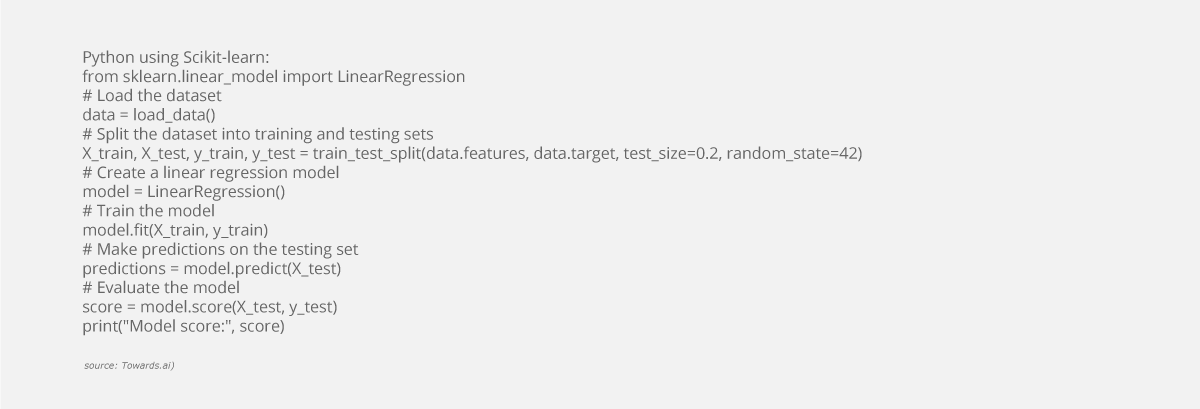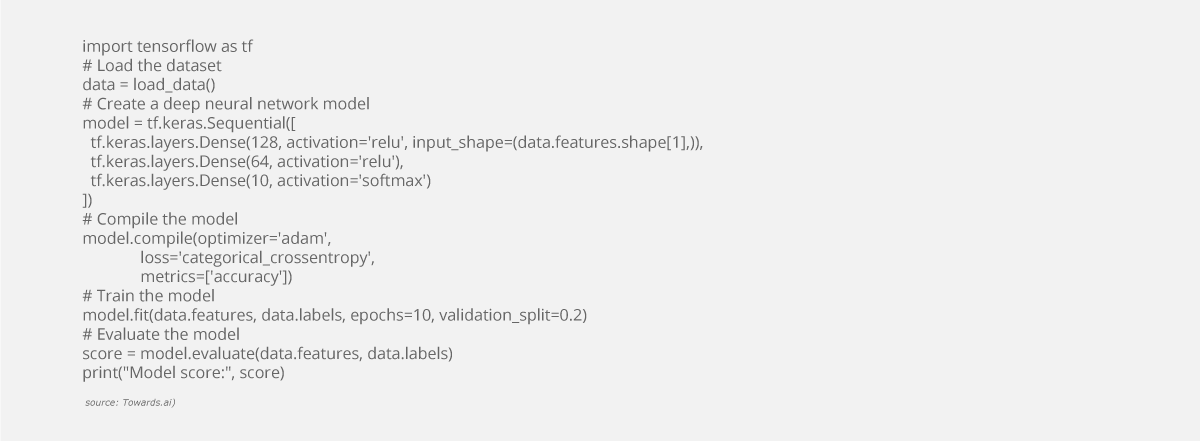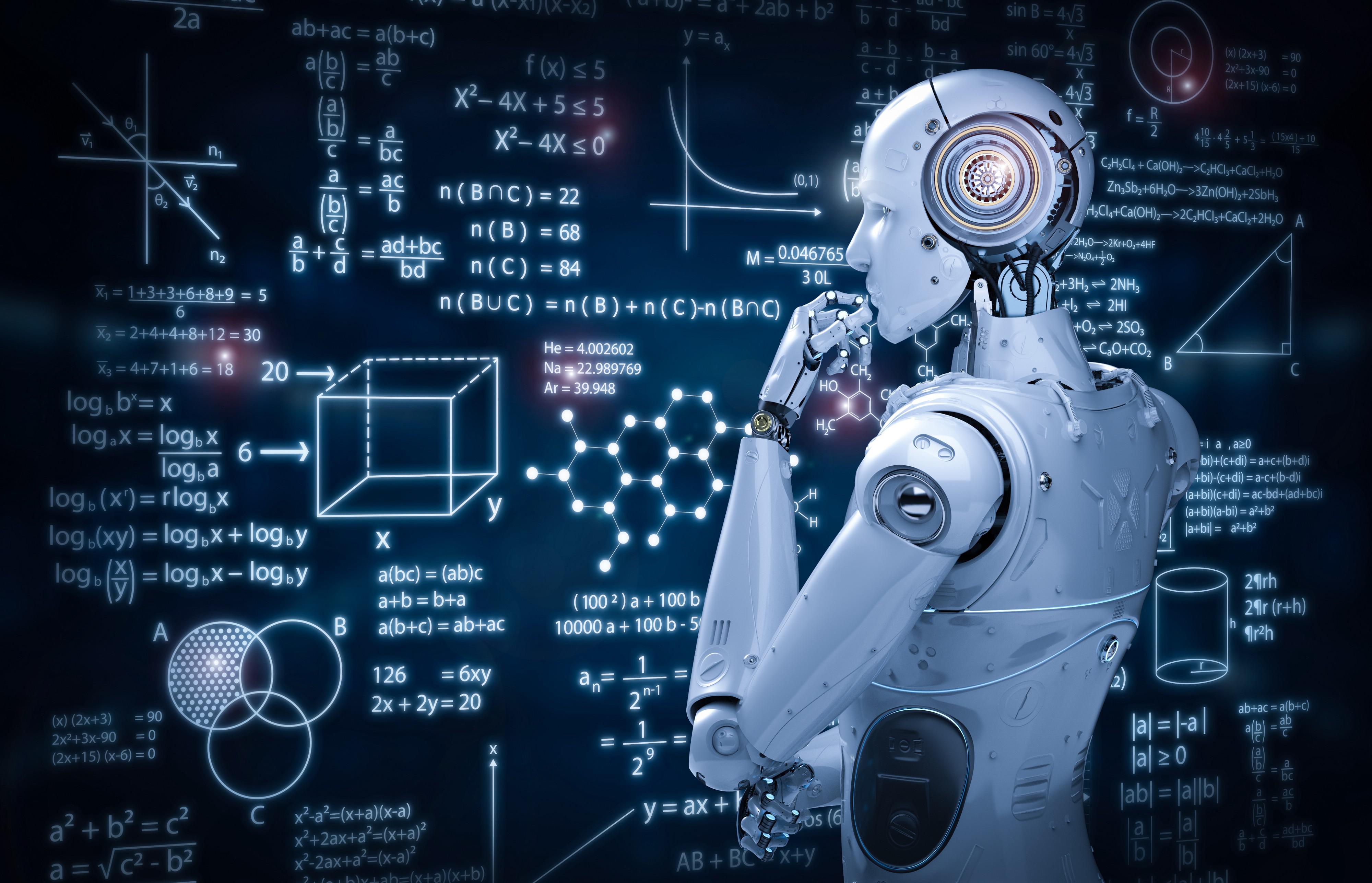Create your cognizance of elementary machine learning with this beginner's guide, featuring popular algorithms and code examples in Python. With the globalization of AI, Machine learning has become the most crucial technology driving the future of business organizations. It handles almost every aspect of our lives, be it speech translation or text commands; you can find the role of machine learning overpowering our daily activities. But then managing such considerable data in an organized way and expecting the desired output result can be skeptical.

As an aspiring AI professional, understanding machine learning algorithms is essential for building intelligent systems. Let us go through a step-by-step process and learn how to demystify machine learning algorithms.
Types of Machine Learning Algorithms
Machine learning has myriad benefits. It enables us to give suggestions, recommendations, translations, compilation, comparison differentiation, and numerous other functions.
The machine learning algorithm is a mechanism that executes its responsibility to predict a probable and desired result according to its input.
Machine learning algorithms can be classified into four categories:
- Supervised Learning Algorithms Supervised learning algorithms are disciplined on classified data to predict outcomes. These algorithms learn from archival and factual data to predict new, unseen data accurately. Examples of supervised learning include regression, which involves predicting numerical values, and classification, which consists in predicting categorical values.
- Unsupervised Learning Algorithms Unsupervised learning algorithms are characterized by anonymous data to identify patterns and relationships. These algorithms find hidden structures in data and group similar data points together. Examples of unsupervised learning include clustering, which comprehends grouping data points based on their similarities, and dimensionality reduction, which involves downsizing the statistic of features in a dataset while retaining essential information.
- Reinforcement Learning Algorithms Reinforcement learning algorithms teach a system to make decisions based on feedback. These algorithms learn by interacting with an environment and receiving input through rewards or punishments. An example of reinforcement learning is Q-learning, which involves learning to make decisions based on the expected reward for each possible action.
- Transfer Learning Algorithms Transfer learning algorithms are the algorithms that get their knowledge from prior completed and solved data and use that inference to solve another task. It uses the logic of ResNet to complete the undertakings given and to yield intuitive results. For instance, a pre-trained ResNet model can be fine-tuned on a smaller dataset of images, such as a dataset of flowers or animals, to classify images in those categories.
Importance of ML Algorithms in Artificial Intelligence
- Machine learning algorithms are essential for building intelligent systems. These algorithms permit machines to learn from data, make predictions, and improve their performance over time.
- By learning from vast amounts of text data, machines can now understand human language, translate languages, and even generate human-like language.
- Machines can recognize objects, faces, and emotions by analyzing vast images and videos.
Machine Learning Algorithms in Python
Python is one of the most in-demand and used programming languages for machine learning. It has a gigantic conglomeration of libraries and tools that make it easy to implement machine learning algorithms.
- Some of the popular Python machine-learning library is Scikit-learn, Numpy, Scipy, and Matplotib. These libraries are previously implemented and provide various machine-learning algorithms for classification, regression, clustering, computing, 2-dimensional and 3-dimensional visual mapping, and dimensionality reduction.
- Another popular library for machine learning in Python is TensorFlow. This library is designed for building and training neural networks, which are the foundation of deep understanding.
Python Code Examples for Beginners in AI
Now that we have wrapped the elemental of machine learning algorithms, it's time to dive into some Python code examples.
Example 1: Linear Regression
Linear regression is a supervised learning algorithm used for predicting numerical values.

Example 2: K-Means Clustering
K-means clustering is an unsupervised learning algorithm used for grouping similar data points.

Example 3: Deep Neural Networks
Deep neural networks are neural networks for solving complex problems such as image classification and natural language processing.

Conclusion
Python is a top-notch medium for implementing machine learning algorithms, which is crucial for creating intelligent systems. Understanding the various machine learning algorithms and how they are used in AI is vital for anyone who wants to work in the field.
Remember to practice and master new things to become a skilled AI professional. Consider getting the most significant artificial intelligence, machine learning, and certifications to prove your AI skills.




